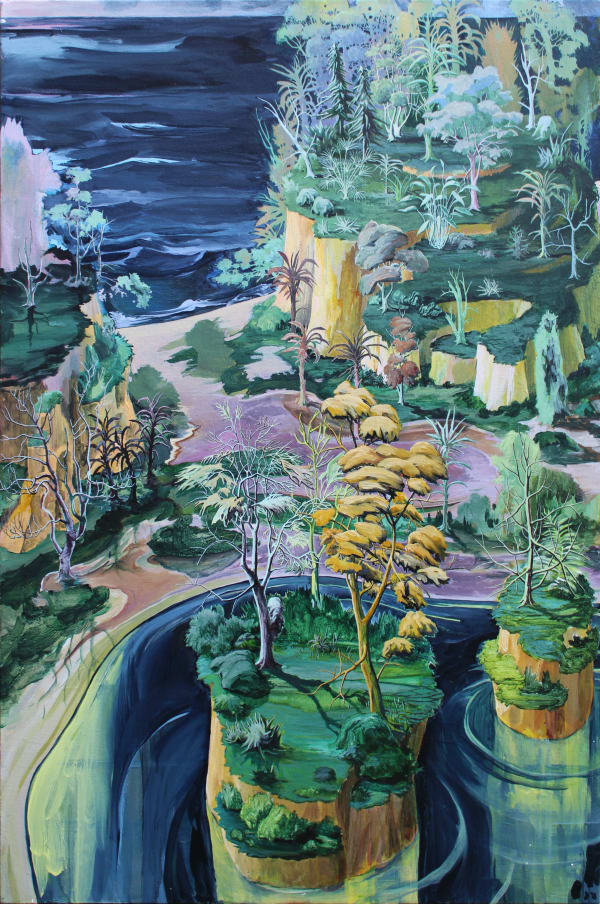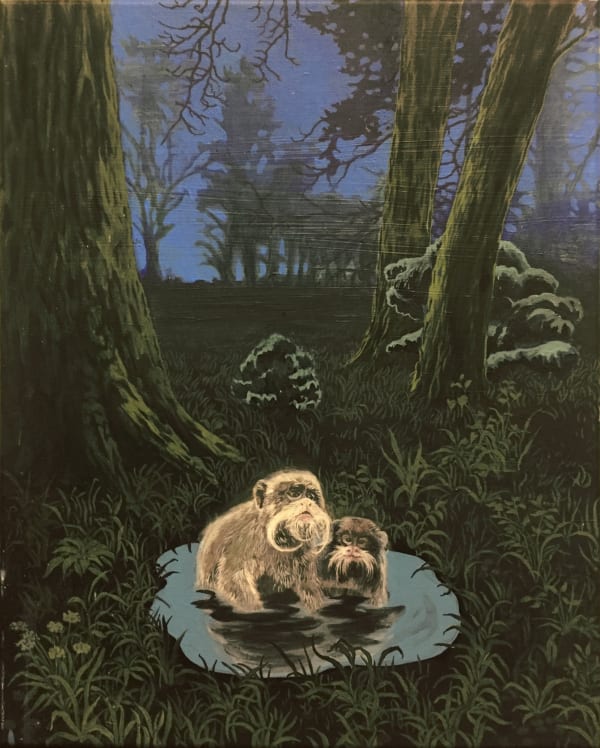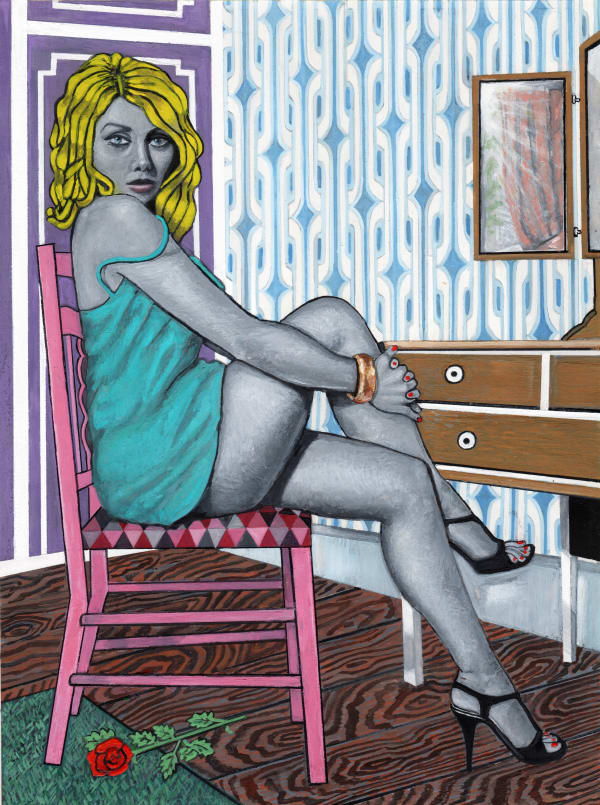-
Devil's in the Detail
-

-
Enquire
-
 Simón Arrebola, The Great Frost. Frozen Tamesis., 2020
Simón Arrebola, The Great Frost. Frozen Tamesis., 2020 -
 Simón Arrebola, The Poet's Library, 2020
Simón Arrebola, The Poet's Library, 2020 -
 Simón Arrebola, The Oak Tree, 2020
Simón Arrebola, The Oak Tree, 2020 -
 Simón Arrebola, The Revelations , 2020
Simón Arrebola, The Revelations , 2020
-
 Simón Arrebola, The Turkish Getaway, 2020
Simón Arrebola, The Turkish Getaway, 2020 -
 Minyoung Choi, Aquarium, 2020
Minyoung Choi, Aquarium, 2020 -
 Minyoung Choi, Desk 2, 2020
Minyoung Choi, Desk 2, 2020 -
 Minyoung Choi, Goldfish 2, 2020
Minyoung Choi, Goldfish 2, 2020
-
 Minyoung Choi, Wildcat, 2020
Minyoung Choi, Wildcat, 2020 -
 Rabia Farooqui, Entertain me while watching
Rabia Farooqui, Entertain me while watching -
 Rabia Farooqui, Flatter Me While I Wait, 2020
Rabia Farooqui, Flatter Me While I Wait, 2020 -
 Rabia Farooqui, Homegrown, 2020
Rabia Farooqui, Homegrown, 2020
-
 Rabia Farooqui, Tails and Talk, 2020
Rabia Farooqui, Tails and Talk, 2020 -
 Rene Gonzalez, Closed Isle, 2020
Rene Gonzalez, Closed Isle, 2020 -
 Rene Gonzalez, Sisters , 2020
Rene Gonzalez, Sisters , 2020 -
 Rene Gonzalez, Woodland Dusk, 2020
Rene Gonzalez, Woodland Dusk, 2020
-
 Forrest Kirk, Fist 21, 2020
Forrest Kirk, Fist 21, 2020 -
 Forrest Kirk, Fist 22, 2020
Forrest Kirk, Fist 22, 2020 -
 Kimathi Mafafo, 'It Was Said That The Queen Had to Lift Her Feet As to Confirm the Kings Curiosity’, 2020
Kimathi Mafafo, 'It Was Said That The Queen Had to Lift Her Feet As to Confirm the Kings Curiosity’, 2020 -
 Kimathi Mafafo, 'Unforeseen Journey Of Self Discovery’, 2020
Kimathi Mafafo, 'Unforeseen Journey Of Self Discovery’, 2020
-
 Kimathi Mafafo, The Girl in the Enchanted Garden II, 2020
Kimathi Mafafo, The Girl in the Enchanted Garden II, 2020 -
 Kate MccGwire, Liminal, 2019
Kate MccGwire, Liminal, 2019 -
 Tuesday Riddell, Empty Egg, 2020
Tuesday Riddell, Empty Egg, 2020 -
 Tuesday Riddell, Night Lemon, 2020
Tuesday Riddell, Night Lemon, 2020
-
 Soheila Sokhanvari, MKULtra 9, 2020
Soheila Sokhanvari, MKULtra 9, 2020 -
 Soheila Sokhanvari, MKULTRA 10 , 2020
Soheila Sokhanvari, MKULTRA 10 , 2020 -
 Soheila Sokhanvari, MKUltra 7, 2020
Soheila Sokhanvari, MKUltra 7, 2020 -
 Soheila Sokhanvari, MKUltra 8, 2020
Soheila Sokhanvari, MKUltra 8, 2020
-
 Soheila Sokhanvari, MKUltra 6 , 2020
Soheila Sokhanvari, MKUltra 6 , 2020 -
 Khushna Sulaman-Butt, ‘An Adorned Woman’, 2020
Khushna Sulaman-Butt, ‘An Adorned Woman’, 2020 -
 Houda Terjuman, Uprooted Home, 2020
Houda Terjuman, Uprooted Home, 2020 -
 Houda Terjuman, Everything was easier when we were birds, 2020
Houda Terjuman, Everything was easier when we were birds, 2020
-
 Houda Terjuman, Where do you come from ?, 2020
Houda Terjuman, Where do you come from ?, 2020 -
 Houda Terjuman, Velvet seat dancing in our infantile amnesia, 2020
Houda Terjuman, Velvet seat dancing in our infantile amnesia, 2020 -
 Houda Terjuman, Resilience, 2020
Houda Terjuman, Resilience, 2020 -
 Rufai Zakari, Muse on Blue Chair, 2020
Rufai Zakari, Muse on Blue Chair, 2020
-
-
-
In October 1968 at the Mexico City Olympics medal ceremony, Tommie Smith and John Carlos raised their fists in a powerful symbol of solidarity that has endured and evolved through generations. In his latest series of vibrant paintings, Los Angeles-based artist Forrest Kirk references this gesture within the context of the recent and ongoing Black Lives Matter demonstrations across the globe. Rendered in a strikingly bold graphical style, the paintings serve as eternal portraits of hope and continued strength. By contrast, Iranian artist Soheila Sokhanvari’s practice is often preoccupied with the reverberations of “historical amnesia”, in which a culture experiences collective memory loss due to a traumatic act in the past. Her ongoing series of paintings entitled MKUltra focuses upon a program of drug experiments that were designed and undertaken by the CIA between 1953 and 1973. Prostitutes were employed by the government to lure unsuspecting men into CIA ‘safe houses’ where they were given high doses of psychoactive drugs such as LSD and monitored for changes in their behaviour. Taking the prostitutes as her subject, Sokhanvari not only reimagines the scenes in the present moment, but also raises pertinent questions around accountability and objectification.
Born in Morocco to a Syrian father and a Swiss mother, Houda Terjuman describes her status as a ‘hybrid migrant’ as crucial to the evolution of her artistic language. Her surreal, poetic paintings and sculptures, which often appear floating or detached, are each imbued with strong emotional and narrative significance. ‘These small objects act as bearers of hope and bridges making the link between cultures,’ says the artist. ‘An empty chair symbolises what we left behind and keeps us connected to our roots; a lonely boat is a bearer of hope; a floating bridge invites us to build connections and empathy towards the unknown.’ In a similar way, Simón Arrebola creates imaginative visual narratives that encompass many different elements often drawn from the artist’s own autobiographical experiences and memories. However, for this exhibition, he responds to another artist’s exploration of self. Based on Virginia Woolf's novel Orlando: A Biography, which parallels much of the author's own life through fiction, each of Arrebola’s paintings reimagine the protagonist anew, representing the fluidity that Woolf evokes in relation to conventional gender stereotypes and identity more generally.
Karachi-based artist Rabia Farooqui also assembles objects and characters to build a sense of narrative intrigue. The artist compares her compositions to a theatrical stage on which she sets up complex interactions, creating humorous and often bizarre scenes that seek to reveal the absurdity of cultural and societal expectations placed on the individual. Lincoln Mwangi similarly draws on the symbolism of objects as an expression of identity and underlying emotion. The Kenya-based artist’s mixed-media figurative works are inspired by his daily life encounters, often depicted in a haunting monochromatic colour palette that creates an unsettling sense of disunity.
South African artist Kimathi Mafafo’s practice encompasses a broad range of mediums including embroidery, oil painting and installation. Typically depicting women in lush, verdant tropical landscapes, Mafafo’s imagery is guided by her desire to celebrate the black female form, inspiring women to embrace their worth and beauty in opposition to traditional prescribed gender roles. Similarly, Ghana-based artist Rufai Zakari seeks to celebrate the strength and versatility of women.
-
Stitching together plastic bags, food packages and plastic bottles found on the streets, the artist creates vibrant, textural scenes that reposition women as the subjects of their own narratives whilst at the same time examining consumerism, environmental pollution, labour, trade, and the impacts of industrialisation in contemporary Ghanaian society.
Tuesday Riddell’s latest works are inspired by the 17th century sub-genre of sottobosco painting made famous by Dutch artist Otto Marseus van Schrieck, who depicted scientific, ground level observations of forest floor creatures and flora. Employing the ancient craft of japanning, a 17thcentury form of decorative finish characterised by black lacquer gilded with gold and silver leaf, Riddell creates magical, nocturnal scenes that capture the unseen metamorphosis and growth of the micro world below the trees. London-based artist Rene Gonzalez also takes nature as his subject. Whilst his earlier paintings often featured characters or human structures, these new works depict largely uninhabited, eerily beautiful landscapes that possess both a sense of quiet stillness and an atmosphere of underlying danger. ‘It’s probably no coincidence that this subject matter has taken centre stage in my practice as global warming and the decimation of wildlife and forests is at the highest level we’ve ever seen,’ says the artist.
For this exhibition, London-based artist Kate MccGwire presents LIMINAL, a mixed media sculpture made from goose feathers, encased in a bespoke oak cabinet. Like much of the artist’s work, the mysterious, writhing serpentine form plays with opposites - beauty and repulsion, movement and constraint, nature and artifice - to challenge our perceptions and encourage deeper engagement with the object. Also interested in the way that we respond to and perceive our environments, Korean artist Minyoung Choi’s painted scenes are often the result of deep, meditative observation conflated with memory and the imagination. Her latest works Desk 2 and Aquarium are preoccupied with the mundane and yet, these familiar objects - clocks, books, fish tanks - are seen through a strange, semi-fluorescent lens that evokes a sense of magic and unreality. In this way, we are invited to consider how our own subjectivity and imagination may colour our perspectives.
British-Pakistani artist Khushna Sulaman-Butt’s practice is also preoccupied with the gaze, specifically in relation to body language and how that might affect the way we that behave or respond to another person or situation. Acknowledging her position of relative power as a portrait artist, she grants her sitters the freedom to choose how they dress and pose so that they have the opportunity ‘to reclaim their identity, sexuality, religion and the values they place upon themselves.’ As a result, the paintings are highly dynamic and original, harnessing portraiture’s ability to be both evocative and confrontational.
Bringing together diverse artistic practices, Devil’s in the Detail demonstrates art’s ability to disrupt the norm by exposing the narrowness of assumed perspectives, whilst at the same time offering us the freedom to envision bold, new worlds and ways of being.
-
-
Devil's in the Detail
Past viewing_room











































